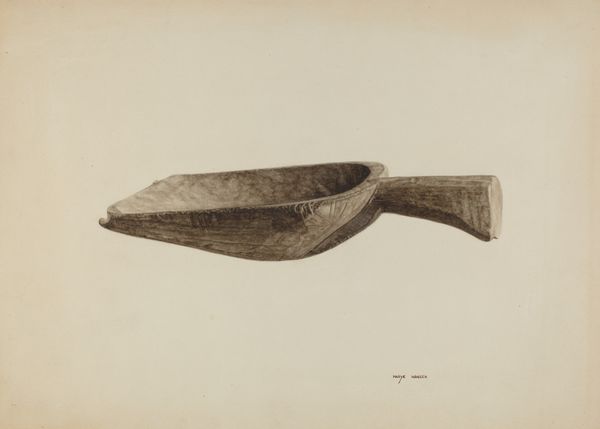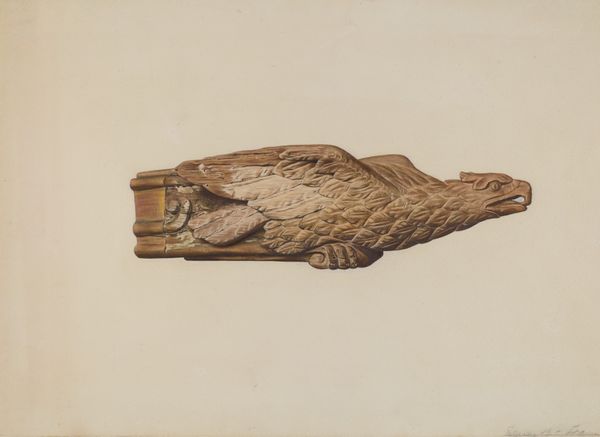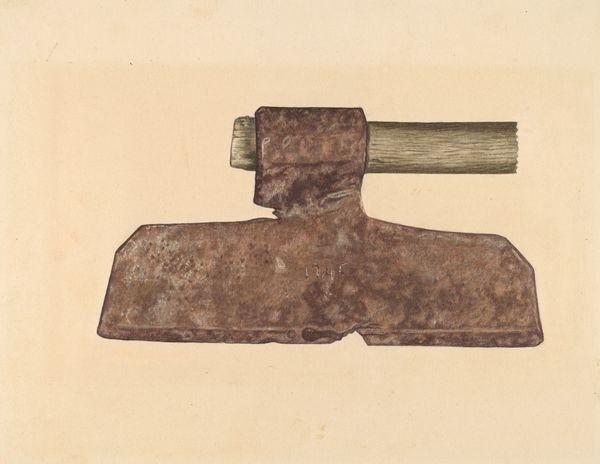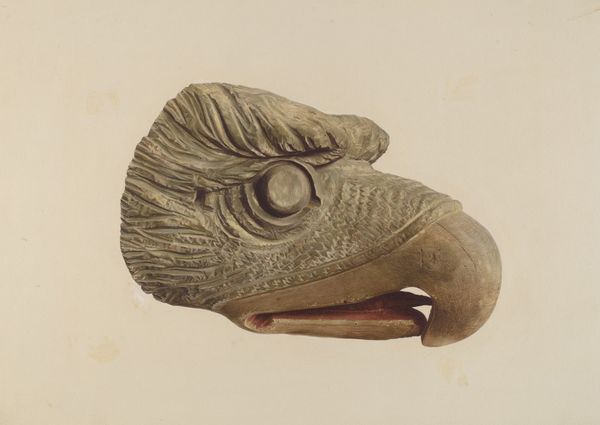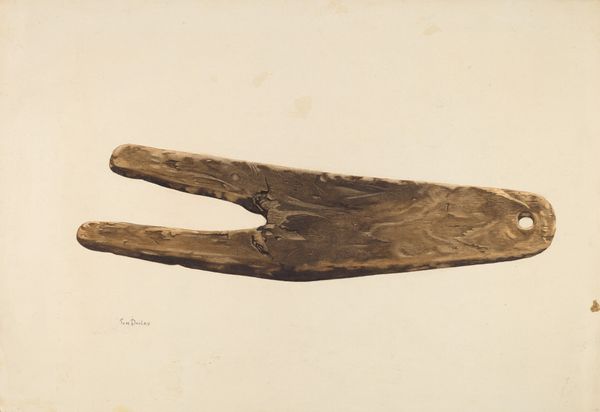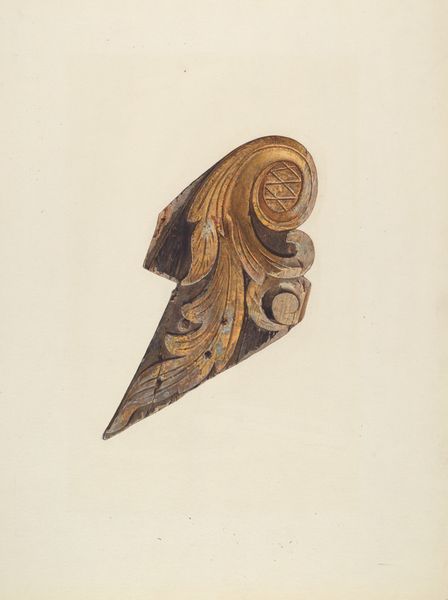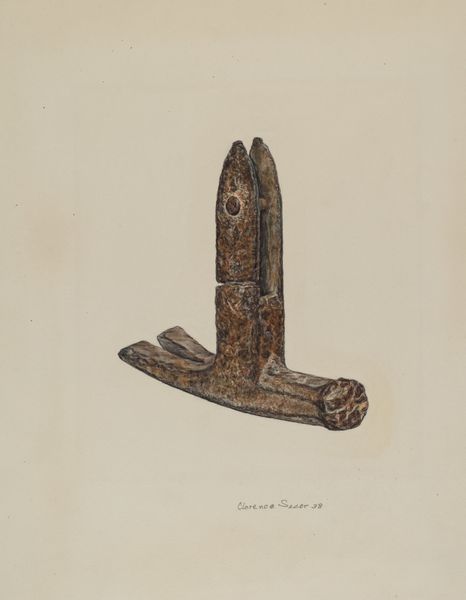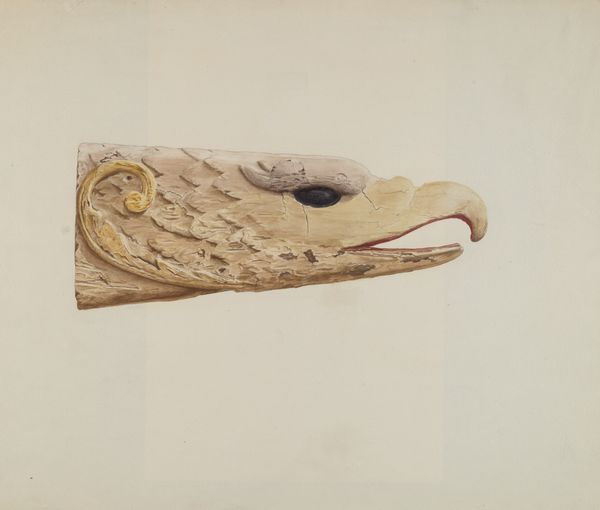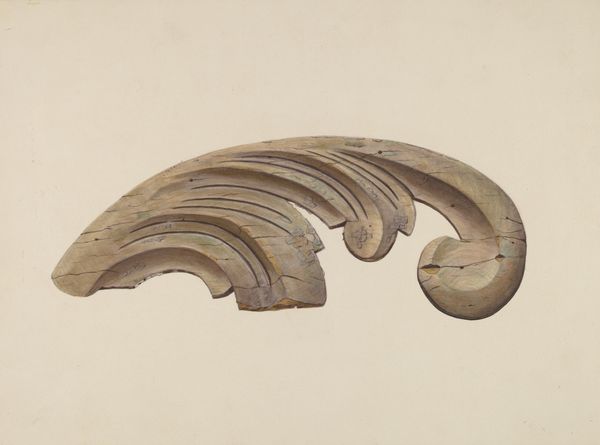
drawing, pencil
#
drawing
#
geometric
#
pencil
Dimensions: overall: 34.4 x 42.4 cm (13 9/16 x 16 11/16 in.)
Copyright: National Gallery of Art: CC0 1.0
Editor: So, this is Henry Tomaszewski's pencil drawing, "Whiffle Tree End," created between 1935 and 1942. It's a surprisingly detailed study of what appears to be a fragment of a tool. I’m struck by how the artist focuses on the texture and the wear of the wood. How do you interpret this work? Curator: This drawing, though seemingly simple, offers a poignant glimpse into the relationship between labor, material culture, and the passage of time. The whiffle tree, or singletree, was a crucial component in horse-drawn farm equipment. By isolating and meticulously rendering this fragment, Tomaszewski invites us to consider the fading agrarian lifestyle and the dignity of labor it represents. Editor: Fading agrarian lifestyle? Could you expand on that? Curator: Absolutely. Consider the historical context: this work was created during the tail end of the Great Depression, when rural America was facing immense hardship and agricultural practices were rapidly changing with the advent of mechanization. The worn texture of the wood, highlighted by the artist’s precise rendering, becomes a symbol of resilience, but also of a way of life disappearing. Does the geometric shape of the end piece strike you in any way? Editor: Now that you mention it, the end has this spiral. It almost looks like a stylized classical capital from architecture… but attached to farm equipment. That contrast feels significant. Curator: Exactly. It hints at how even the most utilitarian objects can possess a certain beauty and dignity. It raises questions about the role of art in preserving and celebrating the stories embedded in everyday objects, particularly those connected to working-class communities. Editor: I see what you mean. I initially focused on the form and texture, but I hadn’t considered the broader social and historical context. Curator: Art has the power to hold up a mirror to society and give voice to the experiences of marginalized communities. Editor: That gives me a lot to think about. Thanks for opening up a completely new way to look at it.
Comments
No comments
Be the first to comment and join the conversation on the ultimate creative platform.
